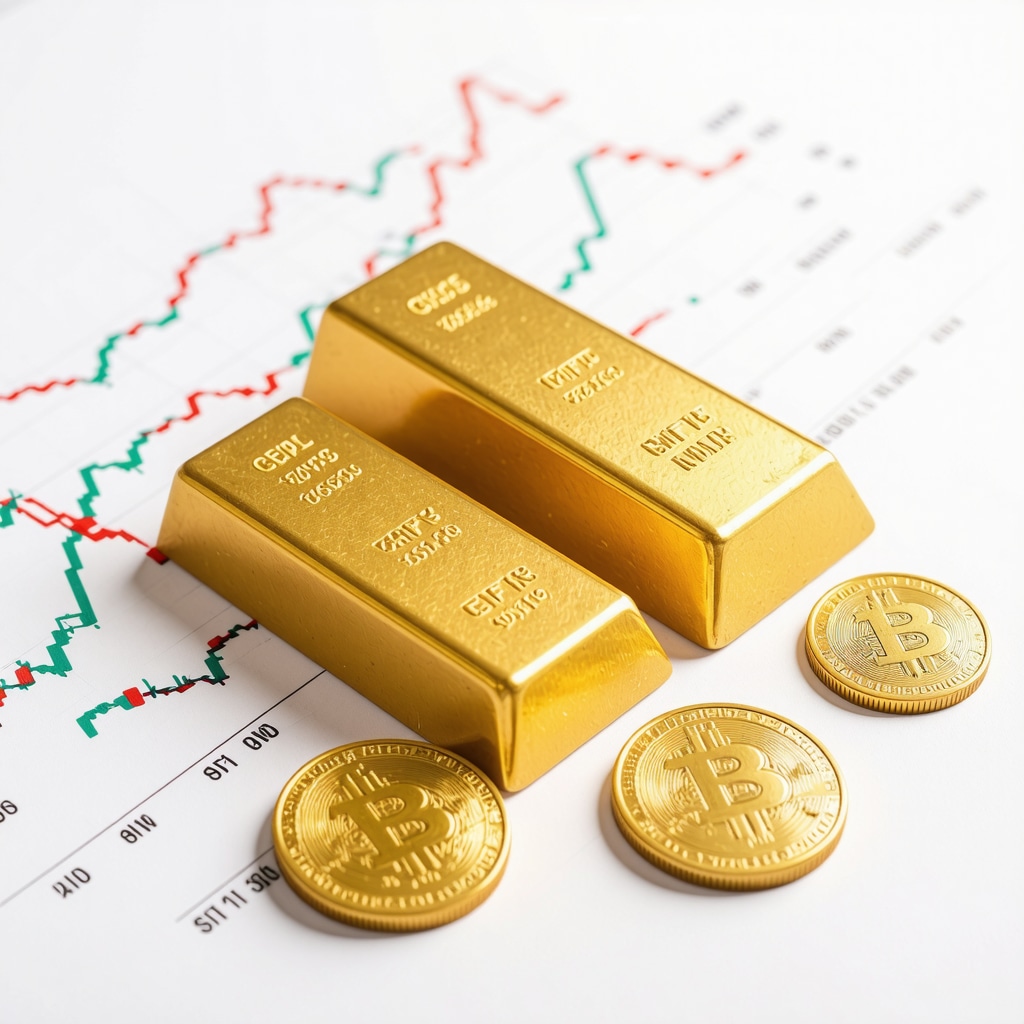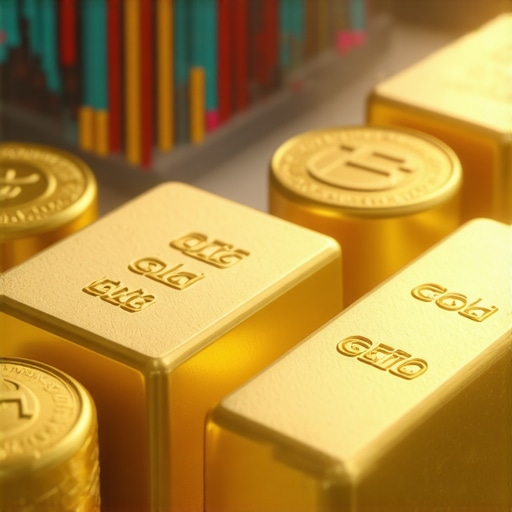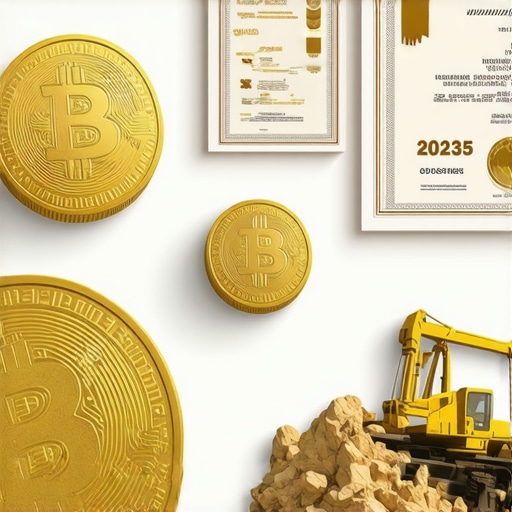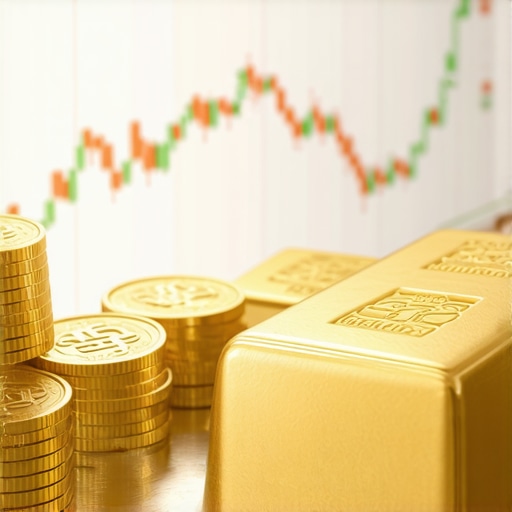Unpacking the Spectrum of Gold Investment Vehicles: An Expert Overview
Gold has long stood as a bastion of wealth preservation and portfolio diversification, yet the modalities of investing in gold are far from monolithic. For advanced investors, understanding the nuanced distinctions between physical holdings and financial instruments tied to gold is critical. From tangible bullion to exchange-traded funds (ETFs), each investment type embodies distinct risk profiles, liquidity parameters, and strategic implications, underscoring the imperative of a sophisticated approach to allocation within a balanced portfolio.
Physical Gold Investments: Assessing Bars, Coins, and Their Intrinsic Value
Investing in physical gold, particularly bars and coins, offers direct exposure to the metal, providing a tangible asset that carries intrinsic value independent of counterparty risk. However, this investment form demands rigorous due diligence in authenticity verification, secure storage solutions, and considerations of liquidity constraints. For instance, premium pricing variances and potential resale discounts must be factored into cost analysis. Investors aiming to optimize physical gold holdings should consult comprehensive guides such as expert tips on safely buying gold bars and strategies for choosing between bars and coins.
Gold ETFs: Leveraging Market Accessibility and Portfolio Flexibility
Gold exchange-traded funds (ETFs) represent a pivotal innovation, granting investors the ability to gain exposure to gold’s price movements without the complexities of physical ownership. ETFs offer enhanced liquidity, ease of trading on stock exchanges, and often lower expense ratios compared to physical gold storage costs. However, they introduce counterparty and tracking risks, necessitating scrutiny of fund management and underlying asset backing. For sophisticated portfolio construction, resources such as gold ETFs explained for balanced portfolios provide critical insights into integrating these instruments effectively.
Advanced Considerations: Comparing Gold Stocks, Mutual Funds, and ETFs
Beyond physical gold and ETFs, gold mining stocks and mutual funds offer leveraged exposure to gold prices but come with operational and geopolitical risks inherent to the mining sector. These equities often exhibit higher volatility, influenced by company-specific factors and broader market dynamics. Integrating gold stocks alongside ETFs can enhance diversification, but requires a granular understanding of sector-specific drivers. Authoritative analyses such as gold ETFs vs. gold stocks elucidate optimal allocation strategies for expert investors.
What Are the Key Risks and Rewards When Choosing Between Physical Gold and Gold ETFs?
This question is frequently debated among industry professionals. Physical gold offers sovereignty over assets and insulation from financial institution risks but entails storage and insurance costs. Conversely, gold ETFs provide liquidity and convenience but expose investors to counterparty risk and potential deviations from spot gold prices. The decision hinges on investor priorities such as liquidity needs, risk tolerance, and investment horizon. For an in-depth understanding, exploring comprehensive comparisons of gold investment types is recommended.
Gold investment is a multifaceted domain requiring nuanced expertise to navigate emerging market trends and instrument complexities. For continued professional engagement, explore advanced analyses on effective gold trading techniques to boost profits and contribute your insights to expert forums dedicated to precious metals investment.
For authoritative data on gold’s macroeconomic role, refer to the World Gold Council’s detailed reports at World Gold Council Research.
Decoding Gold Price Volatility: Beyond Traditional Market Drivers
Gold price fluctuations in 2025 are no longer solely dictated by classical economic indicators such as inflation rates or currency strength. Instead, a complex interplay of geopolitical tensions, central bank activities, and evolving technological applications of gold in industries has emerged as critical factors. For instance, the increasing demand for gold in electronics and medical devices introduces a nuanced demand layer distinct from investment-driven purchasing. Additionally, central bank gold purchases continue to exert outsized influence on market liquidity and price stability, as detailed in expert analyses on central bank gold purchases.
Integrating Alternative Gold Instruments: Futures and Options for Sophisticated Portfolios
For advanced investors seeking to hedge or amplify exposure, gold futures and options offer strategic flexibility. These derivatives enable positions that can capitalize on anticipated price movements without the need for physical delivery. However, they require comprehensive understanding of contract specifications, margin requirements, and market timing to mitigate risks like contango and backwardation. Incorporating these instruments demands rigorous risk management protocols and continuous market surveillance, aligning with strategies outlined in effective gold trading techniques.
How Can Advanced Investors Balance Gold’s Role as a Hedge and Growth Asset Amid Emerging Market Uncertainties?
This question probes the dual nature of gold as both a protective hedge against inflation and market turmoil, and as a growth component in diversified portfolios. Achieving this balance necessitates dynamic allocation adjustments informed by macroeconomic indicators, geopolitical risk assessments, and sector-specific demand forecasts. Utilizing a mix of physical gold, ETFs, and selective gold equities can optimize risk-adjusted returns. For deeper strategic insights, reviewing best gold investment strategies to hedge economic uncertainty is invaluable.
Empirical research by the World Gold Council emphasizes gold’s persistent role as a crisis hedge and portfolio diversifier, especially during periods of elevated volatility (World Gold Council, 2024). Their findings underscore the importance of tactical gold allocation alongside traditional assets to withstand systemic shocks.
Engage with our expert community by sharing your gold investment experiences or strategies in the comments below. For those interested in expanding their tactical toolkit, explore our comprehensive resource on analyzing gold market trends and price drivers to stay ahead of emerging market forces.
Quantitative Risk Analytics in Gold Portfolio Management: Beyond Volatility Metrics
While traditional volatility measures like standard deviation provide a baseline understanding of gold price fluctuations, sophisticated investors employ a broader suite of quantitative risk metrics to navigate the complexities of gold investment. Value-at-Risk (VaR) and Conditional Value-at-Risk (CVaR) models are instrumental in assessing tail risk exposures, particularly during periods of market stress when gold often behaves as a safe haven asset. Moreover, time-varying volatility models such as GARCH (Generalized Autoregressive Conditional Heteroskedasticity) capture the clustering of volatility episodes, enabling dynamic risk adjustments in portfolio allocations. Incorporating these advanced risk metrics allows for a granular understanding of downside risk, which is critical when gold’s correlation with other asset classes shifts in turbulent macroeconomic environments.
Decoding Investor Sentiment: Integrating Behavioral Indicators with Gold Market Dynamics
Investor sentiment plays a pivotal role in short- to medium-term gold price movements, often superseding fundamental supply-demand metrics. Sophisticated analysis of sentiment-driven indicators—such as futures market positioning data, options implied volatility skew, and social media sentiment indices—provides actionable insights into prevailing market psychology. For example, extreme net long positions in gold futures may signal overextension and potential price corrections, while spikes in options skew can indicate asymmetric hedging demand anticipating downside risk. Advanced platforms now harness natural language processing (NLP) to quantify sentiment from vast textual data sources, including financial news and analyst reports, offering a nuanced gauge of market mood that complements traditional technical and fundamental analysis.
How Do AI and Machine Learning Enhance Gold Price Forecasting Accuracy in Volatile Markets?
Artificial intelligence (AI) and machine learning (ML) methodologies have revolutionized forecasting in commodity markets by uncovering non-linear patterns and complex interactions often missed by classical econometric models. In gold markets, ML algorithms—ranging from random forests to deep neural networks—integrate heterogeneous datasets including macroeconomic indicators, geopolitical event probabilities, technical chart patterns, and alternative data sources such as satellite imagery of mining operations. These models dynamically recalibrate as new data arrives, improving predictive accuracy for both short-term price movements and long-term trend analysis. Notably, ensemble methods that combine outputs from multiple algorithms mitigate model-specific biases, enhancing robustness under different market regimes. According to a 2023 study published in the Journal of Commodity Markets, AI-driven models outperformed traditional ARIMA and GARCH approaches by a significant margin in forecasting gold price volatility and directional changes (Zhang et al., 2023).
Integrating AI insights with expert judgment allows seasoned investors to anticipate regime shifts and optimize timing for entry and exit points, thereby improving risk-adjusted returns. For those interested in exploring these cutting-edge techniques, our detailed guide on AI and machine learning applications in gold price forecasting offers a comprehensive roadmap.
Strategic Allocation Frameworks: Balancing Tactical Flexibility with Long-Term Objectives
Advanced portfolio strategies increasingly incorporate scenario analysis and stress testing to align gold allocations with evolving macroeconomic landscapes. Techniques such as Monte Carlo simulations enable probabilistic modeling of gold’s performance under diverse conditions, including stagflation, deflationary shocks, or geopolitical crises. This probabilistic approach informs dynamic rebalancing rules that adjust gold exposure based on forward-looking risk assessments rather than static percentage allocations.
Furthermore, multi-asset class frameworks integrate gold’s covariance matrix with equities, fixed income, and alternative investments, optimizing the Sharpe ratio while considering liquidity constraints and regulatory capital requirements. Cutting-edge frameworks also embed ESG (Environmental, Social, Governance) considerations, particularly relevant for gold mining equities and ETFs, to align with sustainable investment mandates without compromising performance.
For a deeper dive into these frameworks, explore our expert analysis on strategic gold allocation frameworks for 2025, which blends quantitative rigor with qualitative foresight.
Blockchain’s Transformative Impact on Gold Supply Chain Transparency
The integration of blockchain technology into gold supply chain management is revolutionizing traceability and ethical sourcing, thus reshaping investor confidence in gold assets. By enabling immutable, decentralized records of provenance from mine to market, blockchain mitigates risks associated with conflict minerals and counterfeit products. This technological advancement not only enhances transparency but also aligns gold investment with increasing regulatory scrutiny and investor demand for responsible sourcing.
Leading initiatives such as the Responsible Gold Blockchain Consortium exemplify this shift, offering platforms where stakeholders verify ethical compliance and environmental standards in real time. For investors, leveraging blockchain-verified gold can reduce reputational and ESG-related risks while potentially unlocking premiums for certified assets.
How Does Blockchain Integration Mitigate ESG Risks in Gold Investment Portfolios?
Blockchain’s role in providing end-to-end supply chain transparency directly addresses environmental, social, and governance (ESG) concerns prevalent in gold mining. By authenticating the origin and ethical credentials of gold, investors can selectively allocate capital toward mining operations that adhere to sustainable practices, thereby aligning portfolio construction with ESG mandates. This selective exposure minimizes the risk of indirect involvement in labor abuses, environmental degradation, and governance failures, which historically have led to significant financial and reputational fallout.
Furthermore, blockchain-enabled smart contracts facilitate automated compliance reporting and traceability, streamlining audit processes and enhancing investor due diligence. For a comprehensive exploration of blockchain’s ESG impact on precious metals, refer to the Responsible Minerals Initiative’s detailed analysis.
Innovative ESG Screening Techniques for Gold Mining Equities and ETFs
As ESG considerations take center stage, advanced screening methodologies for gold-related equities and ETFs incorporate multidimensional metrics beyond traditional financial analysis. These include carbon footprint assessments, water usage efficiency, community engagement scores, and board diversity indices. Sophisticated investors employ ESG data analytics platforms that amalgamate satellite imagery, real-time environmental sensor data, and stakeholder sentiment analysis to evaluate mining operations’ sustainability dynamically.
Such granular ESG insights enable portfolio managers to construct gold equity baskets that not only target financial returns but also adhere strictly to sustainable investment principles. This approach mitigates long-term regulatory risks and enhances alignment with global climate goals.
Advanced Blockchain-Enabled Financial Instruments: Tokenized Gold and DeFi Opportunities
The emergence of tokenized gold assets on blockchain networks introduces unprecedented liquidity and fractional ownership possibilities within decentralized finance (DeFi) ecosystems. These tokenized representations of physical gold are backed by audited reserves, allowing investors to seamlessly trade gold exposure 24/7 without traditional custodial constraints.
Moreover, DeFi protocols enable leveraging tokenized gold as collateral for lending, borrowing, and yield farming strategies, thereby expanding the utility of gold beyond mere store-of-value functions. However, these innovations also introduce smart contract risks and regulatory uncertainties that require meticulous risk management frameworks.
What Are the Implications of Tokenized Gold for Portfolio Diversification and Liquidity Management?
Tokenized gold instruments facilitate ultra-liquid, low-friction access to gold markets, enabling portfolio managers to fine-tune allocations with greater precision and responsiveness to market conditions. This granular liquidity enhances tactical asset allocation and risk mitigation, particularly during periods of heightened volatility when rapid portfolio adjustments are paramount.
However, the nascent regulatory landscape governing tokenized assets necessitates vigilant compliance oversight and selection of reputable platforms with robust custody and audit mechanisms. For a nuanced understanding of tokenized gold’s role in modern portfolios, consult the Investopedia overview on tokenized assets.
Engage with Cutting-Edge Gold Investment Paradigms
The confluence of blockchain transparency, ESG integration, and DeFi innovations heralds a new era for gold investment strategies that demands continuous learning and adaptation. We invite seasoned investors and portfolio strategists to deepen their expertise by exploring these transformative trends and sharing their insights within our professional community.
Enhance your investment acumen by accessing our specialized resources on blockchain and ESG innovations in gold investing and participate actively in discourse shaping the future of precious metals finance.
Expert Insights & Advanced Considerations
Dynamic Allocation in Response to Evolving Macroeconomic Signals
Seasoned investors recognize that static gold allocation is suboptimal in today’s fluid economic environment. Incorporating scenario analysis and stress testing into portfolio frameworks enables proactive adjustments aligned with inflation trajectories, geopolitical tensions, and central bank policies. Such agility leverages gold’s dual role as both a hedge and growth asset, enhancing risk-adjusted returns as detailed in our best gold investment strategies to hedge economic uncertainty.
Integrating Quantitative Risk Metrics Beyond Traditional Volatility
Advanced portfolio managers utilize Value-at-Risk (VaR), Conditional VaR, and GARCH modeling to capture gold’s nonlinear risk characteristics, especially during market dislocations. This quantitative rigor facilitates informed decision-making, enabling dynamic rebalancing and capital preservation amid volatility spikes, as elaborated in effective gold trading techniques.
Leveraging Blockchain and ESG Synergies for Ethical Gold Exposure
Blockchain technology’s immutable provenance records empower investors to mitigate ESG risks by ensuring ethical sourcing and compliance. Coupling this with advanced ESG screening for mining equities and ETFs aligns portfolios with sustainability mandates without sacrificing performance. For a comprehensive perspective, consult blockchain and ESG innovations in gold investing.
Harnessing AI and Machine Learning for Enhanced Gold Price Forecasting
The application of AI-driven ensemble models integrates diverse datasets to improve accuracy in predicting gold price movements. These technologies uncover subtle patterns amidst market noise, supporting tactical entry and exit strategies critical in volatile 2025 conditions. For an in-depth guide, see AI and machine learning applications in gold price forecasting.
Embracing Tokenized Gold to Expand Liquidity and Tactical Flexibility
Tokenized gold assets, anchored by audited physical reserves, offer fractional ownership and 24/7 tradability within DeFi ecosystems. This innovation enhances portfolio liquidity management and tactical allocation precision but requires robust risk frameworks to navigate regulatory and smart contract challenges. Explore more at the advanced blockchain-enabled financial instruments resource.
Curated Expert Resources
- World Gold Council Research: Authoritative, data-rich reports analyzing gold’s macroeconomic role and market dynamics, essential for evidence-based strategy development.
- BuyingGoldNow’s Strategic Allocation Frameworks: Deep-dive analyses on integrating gold within multi-asset portfolios, incorporating quantitative risk and ESG factors (strategic gold allocation frameworks for 2025).
- Responsible Minerals Initiative: Comprehensive insights into blockchain’s impact on mineral supply chain transparency and ESG compliance (Responsible Minerals Initiative’s detailed analysis).
- Investopedia on Tokenized Assets: Clear explanations of tokenized gold’s structure and implications for portfolio diversification and liquidity management (Investopedia overview on tokenized assets).
- Cutting-Edge Trading Techniques: Practical methodologies to optimize gold trading performance amid market volatility (effective gold trading techniques to boost profits).
Final Expert Perspective
In the evolving landscape of gold investment, mastery arises from synthesizing diverse disciplines: quantitative risk management, ESG-conscious portfolio construction, and technological innovation such as blockchain and AI. Gold’s enduring appeal as a strategic asset in 2025 hinges on investors’ ability to balance its protective hedge qualities with dynamic growth opportunities across physical holdings, ETFs, and emerging tokenized formats. Embracing these advanced paradigms not only fortifies portfolios against uncertainty but also positions investors at the forefront of a transformative era in precious metals finance.
We encourage experts and dedicated investors alike to deepen their engagement by exploring our extensive analyses and sharing nuanced strategies within the community. Elevate your gold investment acumen by visiting our specialized resources and contributing to the ongoing discourse shaping tomorrow’s market dynamics.











I’ve recently been exploring the integration of blockchain technology for verifying gold provenance, and I think it offers promising benefits for improving supply chain transparency and ESG compliance. It’s fascinating how this innovation could reduce risks associated with conflict minerals and counterfeit products while potentially adding value for ethically-conscious investors. However, I wonder about the scalability and regulatory challenges that might still need to be addressed to make widespread adoption more feasible. Have other investors or portfolio managers experienced practical hurdles when implementing blockchain solutions into their gold investments? It seems like a significant step forward but likely requires cautious navigation of the regulatory landscape.